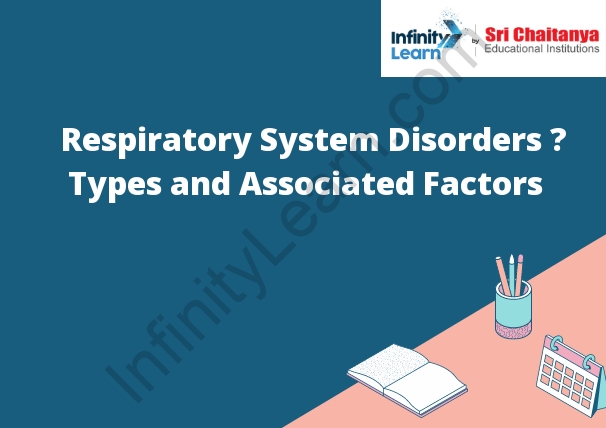Table of Contents
What are Respiratory Disorders?
Respiratory disorders are conditions that affect the lungs and airways. They can cause difficulty breathing, coughing, and wheezing. Many respiratory disorders are caused by infections, such as the common cold, or by allergies. Others are caused by exposure to pollutants or other environmental factors. Respiratory disorders can range from mild to life-threatening.

Factors Associated with Respiratory Disorders
There are many factors that can increase a person’s risk for respiratory disorders, including exposure to pollutants, smoking, and infections. Additionally, certain medical conditions, such as asthma and COPD, can increase the risk for respiratory problems. Respiratory disorders are illnesses that affect the lungs and airways.
They can be caused by a variety of factors, including infection, pollution, and occupational exposures:
- Some respiratory disorders, such as asthma and chronic obstructive pulmonary disease (COPD), are chronic conditions that can be managed with medication and lifestyle changes, but others, such as pneumonia, can be life-threatening.
There are several factors that can increase the risk of developing a respiratory disorder:
- One of the most important is exposure to air pollution. Pollutants such as ozone, nitrogen dioxide, and particulate matter can irritate the lungs and airways, leading to inflammation and respiratory problems.
Exposure to secondhand smoke is another major risk factor for respiratory disorders:
- Secondhand smoke contains a variety of toxins that can damage the lungs and airways. It is especially harmful to children and pregnant women, and can cause asthma, pneumonia, and other respiratory illnesses.
Occupational exposures can also cause respiratory problems:
- Exposure to smoke, fumes, and dust can irritate the lungs and airways, leading to inflammation and respiratory problems. Some occupations, such as mining and construction, are particularly hazardous and can cause respiratory disorders such as black lung disease and silicosis.
Infections are another major cause of respiratory problems:
- Infections such as pneumonia, bronchitis, and the flu can cause inflammation and damage to the lungs and airways. They can also lead to serious respiratory illnesses such as pneumonia and meningitis.
Finally, genetics can also play a role in respiratory disorders. Some respiratory disorders, such as asthma and COPD, are hereditary, and certain genes can increase the risk of developing these conditions.
Types of Respiratory System Diseases
There are many different respiratory system diseases, and each one has its own unique symptoms and causes. Some of the most common respiratory system diseases include pneumonia, bronchitis, and asthma.
- Pneumonia is a bacterial infection of the lungs that can cause a wide range of symptoms, from mild to life-threatening.
- Bronchitis is an inflammation of the airways that can cause a persistent cough, chest pain, and difficulty breathing.
- Asthma is a chronic respiratory condition that causes wheezing, chest tightness, and shortness of breath.
- Each of these diseases can be treated with medication and/or lifestyle changes, but it is important to see a doctor if you are experiencing any respiratory system symptoms.
Causes of Respiratory Diseases
There are many causes of respiratory diseases, including infection, pollution, and smoking. Infection is by far the most common cause, and can be caused by a variety of viruses or bacteria.
Pollution can include both indoor and outdoor air pollution, while smoking is the leading cause of preventable death in the world.
Respiratory Diseases
Respiratory diseases are diseases that affect the respiratory system, which includes the nose, throat, larynx, trachea, bronchi, and lungs. The respiratory system brings in oxygen from the air and expels carbon dioxide from the body.
- Respiratory diseases can cause difficulty breathing, coughing, and chest pain.
- They can be caused by infections, allergies, smoking, and other factors. Treatment depends on the cause of the respiratory disease.
Fun Facts on about the Respiratory System
The respiratory system is responsible for bringing oxygen into the body and removing carbon dioxide. It includes the nose, mouth, throat, lungs, and airways.
- The nose is responsible for filtering the air we breathe and warming it up before it enters the lungs.
- The mouth is responsible for talking and chewing food.
- The throat is responsible for swallowing food and liquids and for producing speech.
- The lungs are responsible for taking in oxygen from the air and removing carbon dioxide.
- The airways are responsible for carrying air from the nose and mouth to the lungs.









